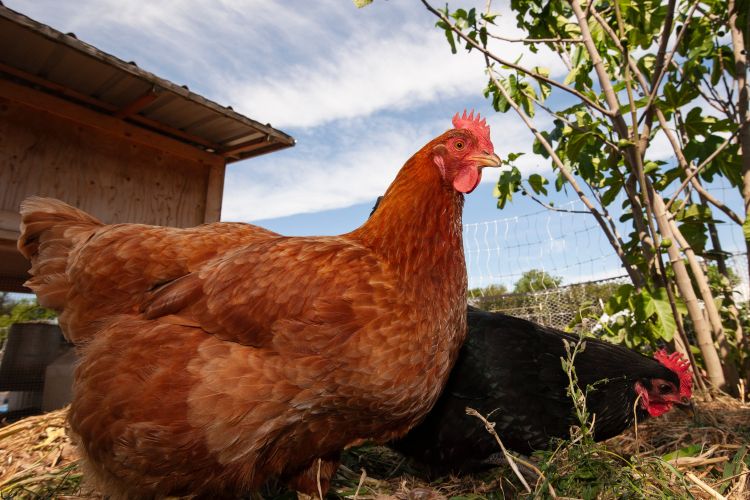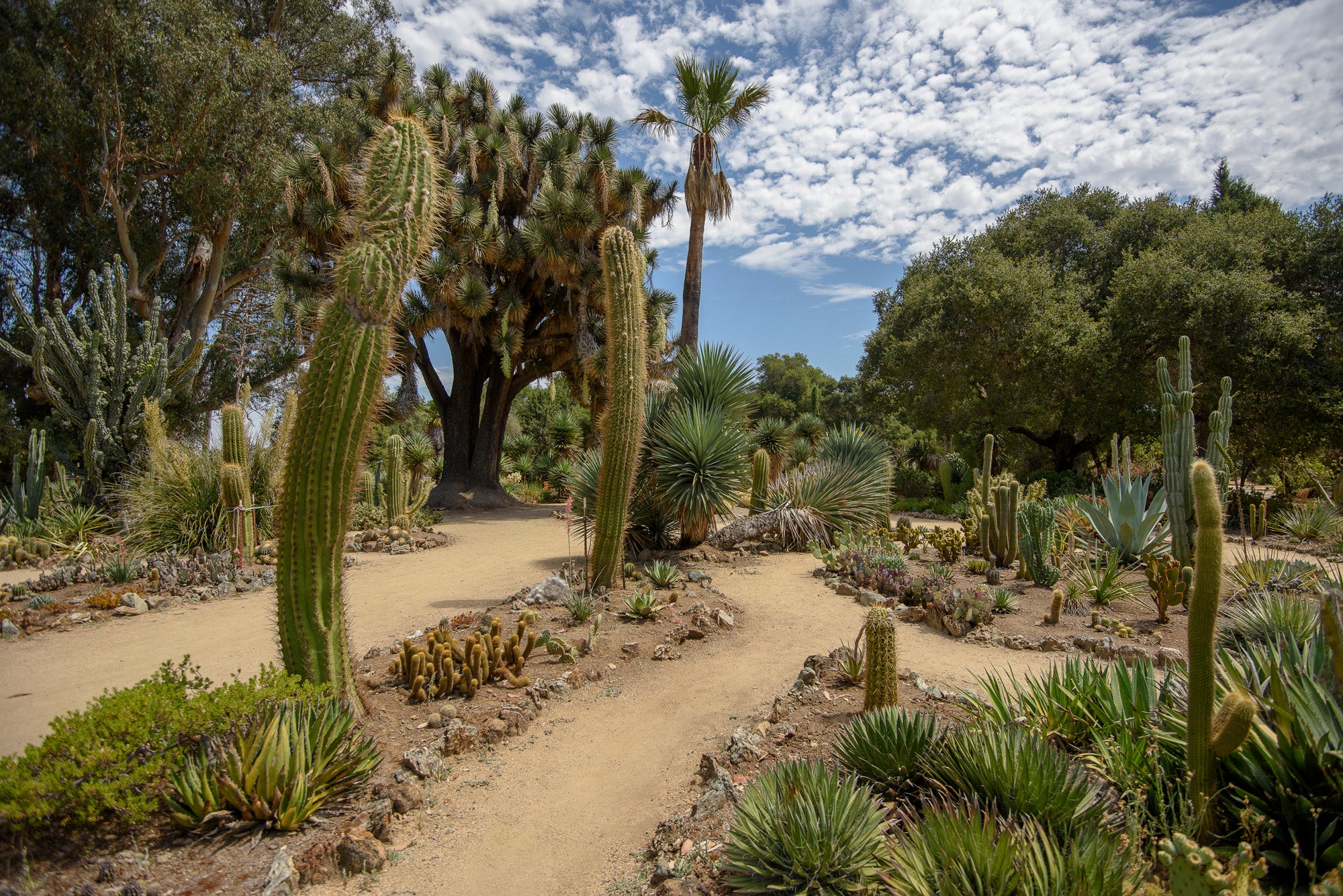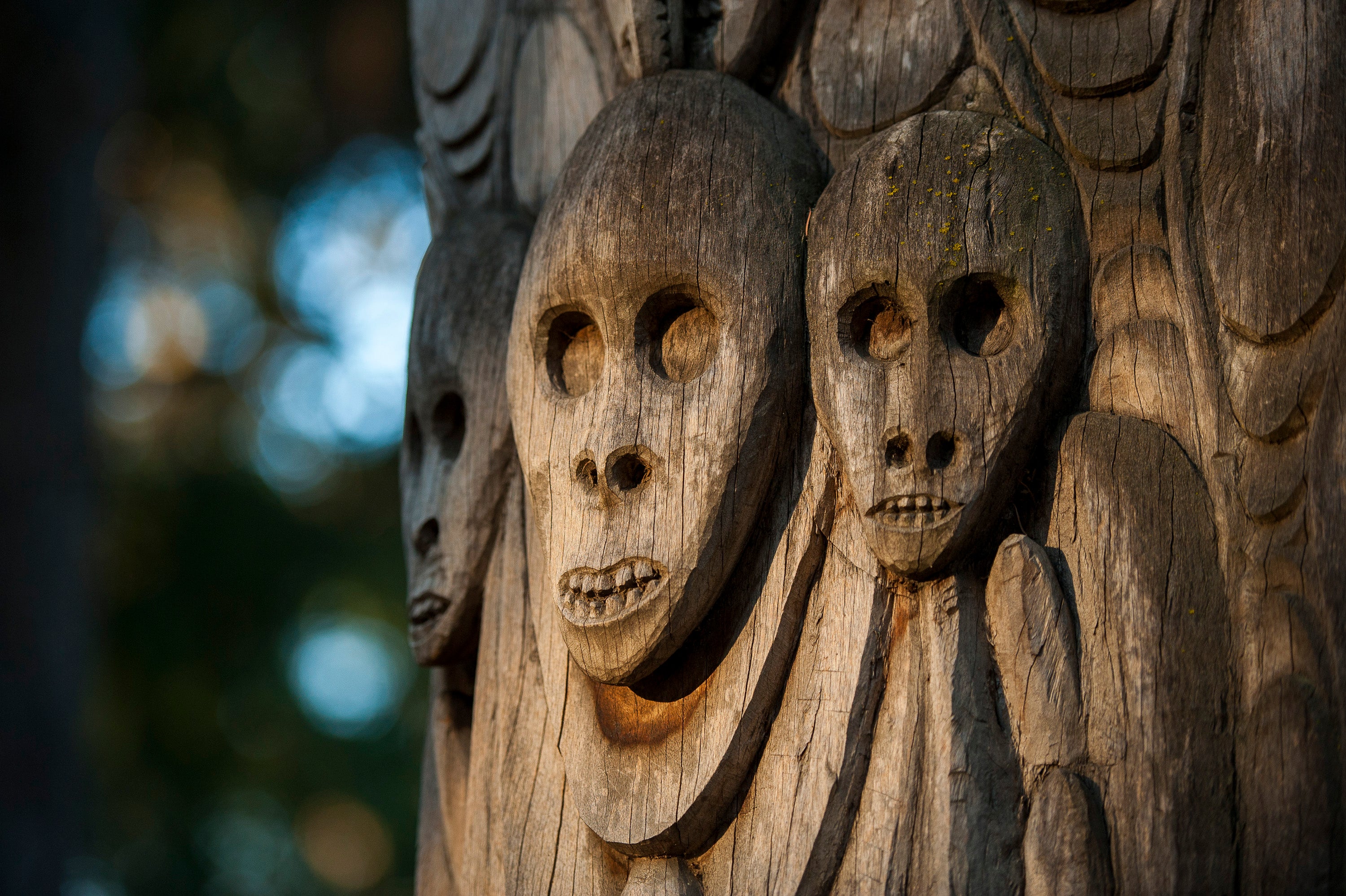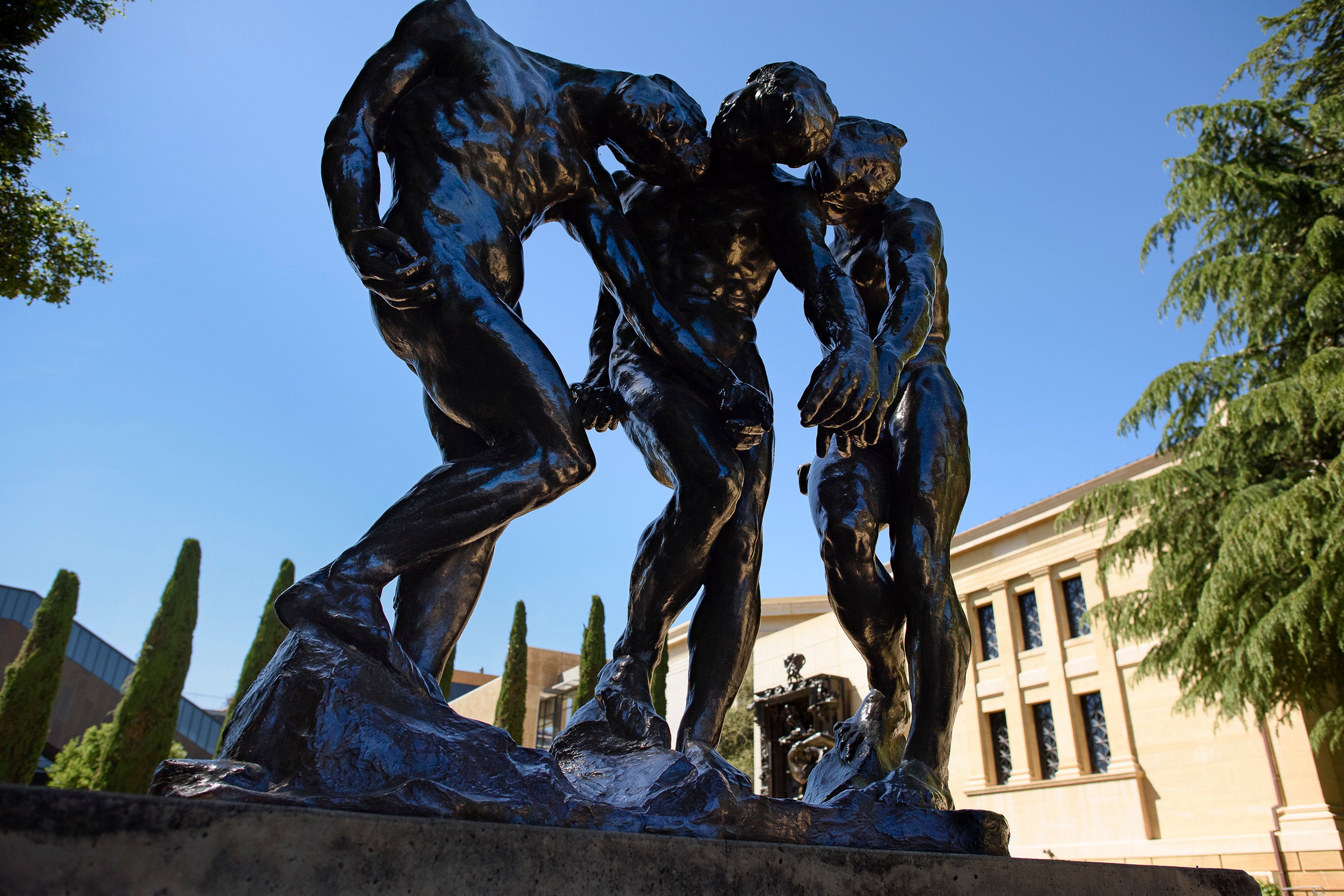At Stanford University, gardens beckon visitors to learn en plein air – about small-scale sustainable farming, about sun-loving desert plants, and about sculpture, ranging from works carved in wood and stone by village artists from Papua New Guinea to bronzes created by the renowned French sculptor Auguste Rodin.
The gardens are open to the people who live, work and study at Stanford, people who live nearby, and visitors who come to campus from across the nation and around the world.
While most of the gardens were designed for contemplative strolls, the new O’Donohue Family Stanford Educational Farm invites visitors to “have a great time getting dirty” while helping its gardens grow – gloves and tools provided.

Students water small plants they propagated from clippings at the Stanford Educational Farm. (Image credit: L.A. Cicero)

Each of the farm’s chickens lay about 15 eggs each week. (Image credit: L.A. Cicero)

A student cares for the seedlings in the hothouse. (Image credit: L.A. Cicero)
“We grow food, flowers and a new generation of leaders in sustainability”
If the gates are open, visitors are invited to walk into the O’Donohue Family Stanford Educational Farm, which produces more than 200 varieties of vegetables, flowers, herbs, field crops and fruit on 6 acres on the southwest side of campus.
On Tuesday, Thursday and Saturday mornings during drop-in volunteer hours, the staff who oversee the farm will put visitors to work, harvesting fresh produce destined for student dining halls and campus restaurants, for instance, or pulling weeds, planting new crop rotations, deadheading flowers, composting and mulching.
For Stanford students, the farm — operated by the School of Earth, Energy & Environmental Sciences — is a vast outdoor classroom and laboratory where they test new ideas about the biological, social and environmental aspects of farming and gain experience in the practice of sustainable agriculture.

Sand pathways wind through the cacti and succulents in the Arizona Garden at Stanford. (Image credit: L.A. Cicero)

Opuntia species like this prickly pear are the most cold-tolerant of the lowland cacti, extending into western and southern Canada. (Image credit: L.A. Cicero)

Parry’s agave, or mescal agave, is a slow-growing succulent perennial native to Arizona, New Mexico and northern Mexico. (Image credit: L.A. Cicero)
Flora, and the occasional fauna, on display in the Arizona Garden
Jane and Leland Stanford originally envisioned the Arizona Garden as a private garden, part of the grand estate they planned to create on their stock farm. After the death of their only child, 15-year-old Leland Jr., the grief-stricken parents decided to transform the land into a university in his memory. The garden became part of its grounds.
During the university’s early years, the Arizona Garden became the meeting place for many courting students even though, as the university registrar noted in 1896, the “bristling cacti and other uncompromising specimens of Nature’s pessimistic moods made strolling in the garden something of a challenge.”
Meandering paths lead through the garden around rock-edged islands of cacti and succulents. The cacti population includes Mojave yucca, also known as the “Spanish dagger” for its bayonet-like leaves. Among the succulents are flat-flowered aloes, whose nectar-rich flowers attract shimmery hummingbirds. If you pause a moment, you may see black-tailed jackrabbits loping between the plants, looking for a bite to eat.

A detail from Wopasuee by Iatmul artists Yarume Mambegawi and David Yamanapi. (Image credit: L.A. Cicero)

Kwoma Spirit House Post (detail) by Kwoma artists Membor Apokiom and David Kapa Kaipuk. (Image credit: L.A. Cicero)

The Thinker (Yerakdu) by Simon Gambulo Marmos and Jo Mare Wakundi, Iatmul artists from the Tambanum village. (Image credit: L.A. Cicero)
Stroll among the people, animals and ancestors of Papua New Guinea
Nearly 25 years ago, a group of artists from Papua New Guinea, working in a grove of cedar and oaks on the west side of campus, created dozens of sculptures using pumice stone from California and wood logs shipped from their island nation.
The artists, ranging in age from 27 to 74, used handmade iron adzes, hardened chisels, knives and the occasional chainsaw. They welcomed visitors, including schoolchildren, chatting with them through an interpreter. Barbecues were held at the site, complete with drumming, dancing and demonstrations of face painting and bark painting. The final celebration drew some 1,000 people and continued until dawn.
One of the artists took inspiration from Rodin’s The Thinker, a world-famous bronze – a nude male figure sitting on a rock, chin resting in one hand – that resides across campus at the Cantor Arts Center. In the Papua New Guinea Sculpture Garden, The Thinker is a nude male figure carved in wood, his chin resting in both hands. The sculpture, created by two of the visiting artists, depicts an ancestor sitting alongside the hole from which he emerged into the world and thinking about how he can create fellow humans out of clay.

The Three Shades is a sculpture using three separate casts of the same figure that has been rotated into different positions. Each is a small version of the monumental bronze Adam that Rodin once planned to place at one side of The Gates of Hell. (Image credit: L.A. Cicero)

Rodin's sculpture The Martyr is in the foreground as visitors inspect Rodin's The Gates of Hell. (Image credit: L.A. Cicero)

Detail of the sculpture The Martyr. (Image credit: Ian Turpin)
Contemplate Rodin sculptures day and night
At the Rodin Sculpture Garden, visitors can take a seat near the French artist’s monumental masterpiece The Gates of Hell and his bronze sculptures of Adam and of Eve while gazing out at many more of the artist’s revolutionary works.
Twenty bronze sculptures by Rodin stand in the garden, which is part of the Cantor Arts Center. Rodin’s depiction of the French painter Jules Bastien-LePage is there. So is Rodin’s Orpheus, a legendary musician, poet and prophet in Greek mythology. While The Walking Man, a nude figure without head and arms, takes a giant stride, The Three Shades, a trio of male nudes, lean into each other.
Benches and picnic tables encourage visitors to linger and enjoy the garden and its world-class artistic offerings. Cantor docents, who invite visitors to touch the sculptures, offer daytime tours on Wednesdays, Saturdays and Sundays – rain or shine. At night, the sculptures are lit from below, reminiscent of the way Rodin displayed his work by candlelight in his own studio.